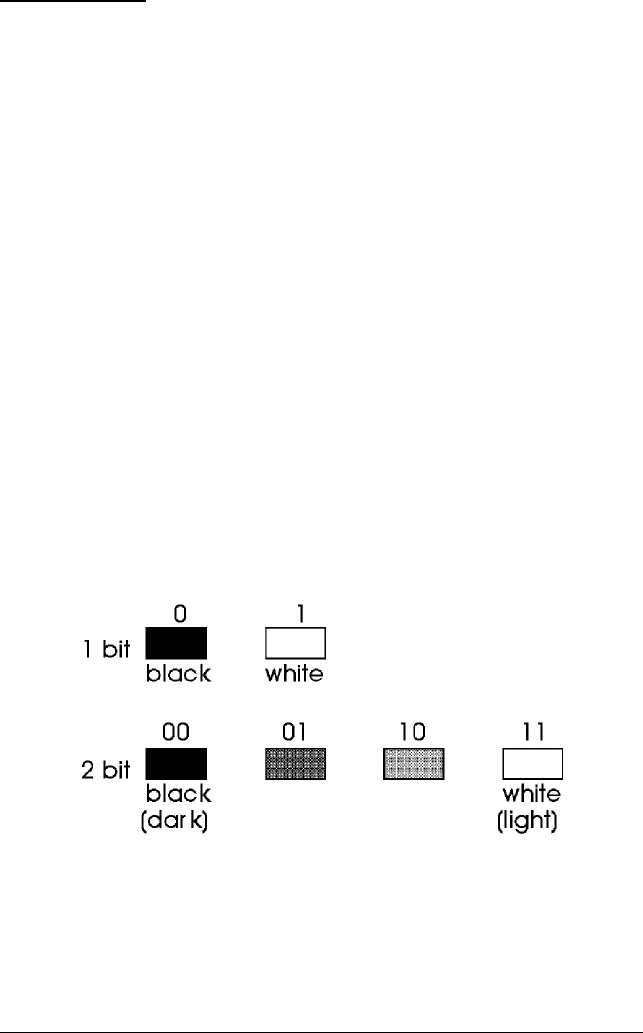
Image Data
The manner in which an image is converted into data and the way the
data is sent to the computer is predetermined. The following sections
describe this process.
Image data format
The smallest element of image data is called a pixel (short for picture
element). A pixel is an individual dot; combining these dots, or pixels,
forms an image.
If you represent each pixel by one bit of data, you can determine
whether that pixel is light or dark (1 or 0). This is called bi-level
conversion, and produces bilevel data.
However, most images contain a nearly infinite number of color
shades. By increasing the number of data bits per pixel, you can
increase the possible number of pixel shades you can represent. As
you can see from the following illustration, 1 bit per pixel allows you
to show only two shades; 2 bits per pixel allows you to represent up to
4 shades.
The image data format is what determines the amount of data
necessary for each pixel. The amount of data determines how many
shades you can express. Normally, you can select from 1 to 8 bits per
pixel. For monochrome scanning, this data determines the shade of
gray. For color scanning, you can differentiate the same number of
shades for each of three colors (green, red, and blue).
Overview 1-9


















